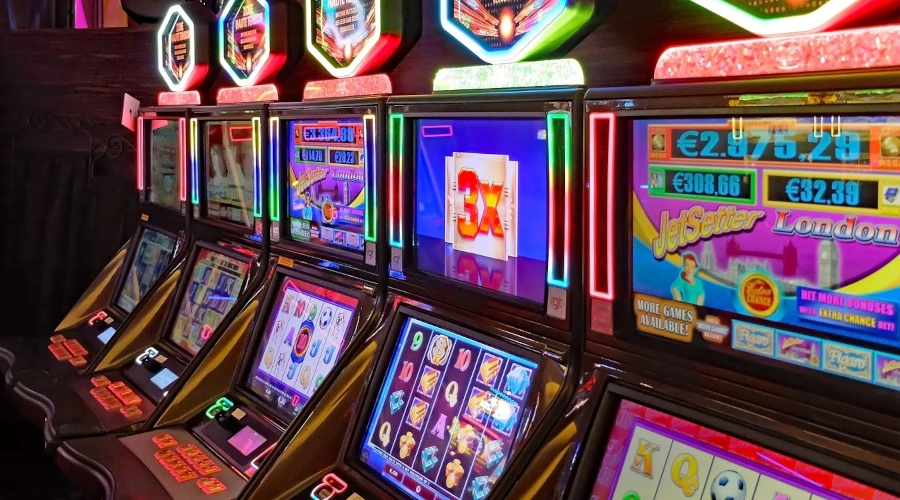 November 5 2025
November 5 2025
Learning how to test slot volatility isn’t about hunches or complicated math. It’s about observing how design and timing shape your experience. Many guides explain volatility as how often and how much a slot pays, but they stop short of showing you how to feel it during play.
The truth is, volatility is a sensory experience disguised as statistics. This ten-minute demo workflow helps you decode it through rhythm, pattern, and user interface cues—turning a random spin into something readable.
Start by opening the paytable before you spin. This small habit reveals more about volatility than any tip video or forum ever could. You’re not just reading numbers; you’re looking for design fingerprints.
This step is about orientation. Think of it like checking the weather forecast before a walk. You can’t control the conditions, but you can prepare for the pacing ahead.
Now it’s time to test what you’ve predicted. Set a low demo stake, spin exactly 60 times, and jot down what happens. Use two marks:
After 60 spins, divide the wins by 60 to estimate hit frequency. Low-volatility slots tend to land around 35–45% hits. High-volatility ones drop closer to 15–25%. You’re not proving anything scientific here—the goal is to translate volatility into rhythm. Small, steady returns create an easy tempo; high variance creates longer, quieter builds that suddenly spike.
Designers think hard about which options to implement to create flow and ensure different players have a range of choices to satisfy them.
Before finishing, spend a few minutes watching how the game teases rewards. You’ll notice scatter symbols almost landing, near misses that flash dramatically, or bonus meters filling slowly over time.
If these cues appear often but deliver modest outcomes, the game likely leans toward lower volatility. Sparse, dramatic triggers usually indicate higher volatility.
To see how these same design ideas are applied in real-money environments, take a moment to explore how players play slots for cash in a live lobby. It’s really important to understand volatility if you’re going to play slots for cash, so make sure you’ve put energy into grasping this before you plunge in.
Volatility tells you how wins are distributed. RTP (return to player) tells you how much is theoretically returned over millions of spins. They complement each other but measure different aspects. A game can offer a high RTP while still feeling stringent if its volatility curve is wide.
Your ten-minute test won’t reveal RTP accuracy, but it will expose pacing—the real-world heartbeat of a slot. The length of time between small hits, near misses, and bonuses forms the rhythm of play. Once you see it, you stop blaming luck and start recognizing structure.
For those who want to separate fact from superstition, Joe Fortune’s Busting Common Online Pokie Myths is a good companion read. It explains why “hot” and “cold” streaks don’t exist and how modern slots maintain fairness regardless of timing or player pattern. Understanding that helps you interpret volatility as intended—a balance of frequency, reward, and tension.
After each demo, write one concise line summarizing what you have observed. Examples:
Repeating this across multiple titles creates a reference library of patterns. Over time, you’ll spot studio-specific habits. Some developers favor smoother pacing, while others specialize in long suspense arcs. Your notes turn what feels like chaos into a set of predictable design rhythms.
This process also reduces emotional bias. Instead of reacting to streaks, you’re studying them. You begin to see volatility as an artistic decision.
Volatility meters—bars, stars, or scales—are helpful but inconsistent. A “medium-high” rating from one studio might behave like “high” from another. Combine these visual guides with your logged data for a clearer view.
The goal isn’t perfect classification. It’s learning to recognize how features and feedback timing communicate variance.
Consistency is what turns this ten-minute exercise into a skill. Keep the same structure every time—90 seconds reading, 60 spins tracking, two and a half minutes observing. If you vary conditions, you lose comparability. If you stay disciplined, your instincts sharpen.
What begins as data-gathering becomes intuition. You’ll learn to sense a game’s rhythm within a few minutes. You’ll notice when hit clusters are too uniform or when suspense peaks too far apart. This ability not only improves your understanding of volatility but also deepens your appreciation of slot design itself.
When you approach slots with analysis instead of assumption, you strip away superstition. You stop thinking in terms of winning or losing and start seeing structure, timing, and flow—the creative heartbeat that defines every slot’s volatility profile.


Malta-License (EU)
 There is a No Deposit Bonus available: 25 Free Spins
There is a No Deposit Bonus available: 25 Free Spins


Curacao-License



Curacao-License
 There is a No Deposit Bonus available: 30 Free Spins
There is a No Deposit Bonus available: 30 Free Spins


Curacao-License
 There is a No Deposit Bonus available: 25 Free Spins
There is a No Deposit Bonus available: 25 Free Spins




Curacao-License
 There is a No Deposit Bonus available: 30 Free Spins
There is a No Deposit Bonus available: 30 Free Spins


Malta-License (EU)


Curacao-License


Curacao-License


Malta-License (EU)


Malta-License (EU)


Curacao-License


Curacao-License
 There is a No Deposit Bonus available:
25 Free Spins
There is a No Deposit Bonus available:
25 Free Spins


Curacao-License


Curacao-License